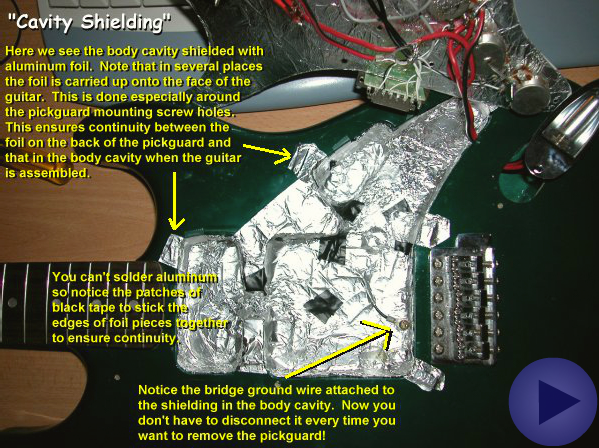Originally posted by Fluoroscope 5000
View Post
The kind of metal does matter when dealing with magnetic flux, e.g. leakage from a leaky transformer - there you're not looking for a shield but rather something to persuade the flux to take the easy route close to home rather than head off to your sensitive circuitry. So special alloys with high EM permeablity, e.g. mu-metal, are used. But obviously that's different.
Back to guitar shielding -
Aluminum foil is something I use only when testing to see if shielding will help a particular guitar. Then, it's invaluable. It's easy to take a big hunk of foil and wrap it around the body to cover the controls - from the outside - and secure it temporarily to ground. Then see if it cuts the noise. For temporary connection, an alligator clip jumper from foil to grounded hardware is all that's needed.
For installed shielding on the other hand, I'd never use aluminum foil nor tape. The difficulty in achieving conductive overlap is enough to discourage. Fortunately copper foil tape or shielding paint work well (get the right brand of paint!), last a long time, and are easy to apply. My own preference is copper tape w/the conductive adhesive. Downside is $$$ but there are several brands to choose from & many retailers, so at least a little price competition; before I bought I did a spreadsheet to calculate max coverage per dollar. I don't know how long the adhesive remains conductive, but so far, +1 year on the single installation I did. I rely on the adhesive for overlap; for final connection to ground I prefer a mechanical connection though I suppose one could solder also. Possibly there is an expected-life spec for the adhesive; I've been too lazy to look for it but if I were doing the work for hire I would certainly check & if necessary call the company.
A long discussion about the merits pro or con of aluminum tape, or for that matter aluminum foil, doesn't seem that useful given the alternatives are so much better. Unless you are rock-bottom broke at the moment - which happens! - in which case, sure, figure out a mechanical connection that will last & go for it.


Comment